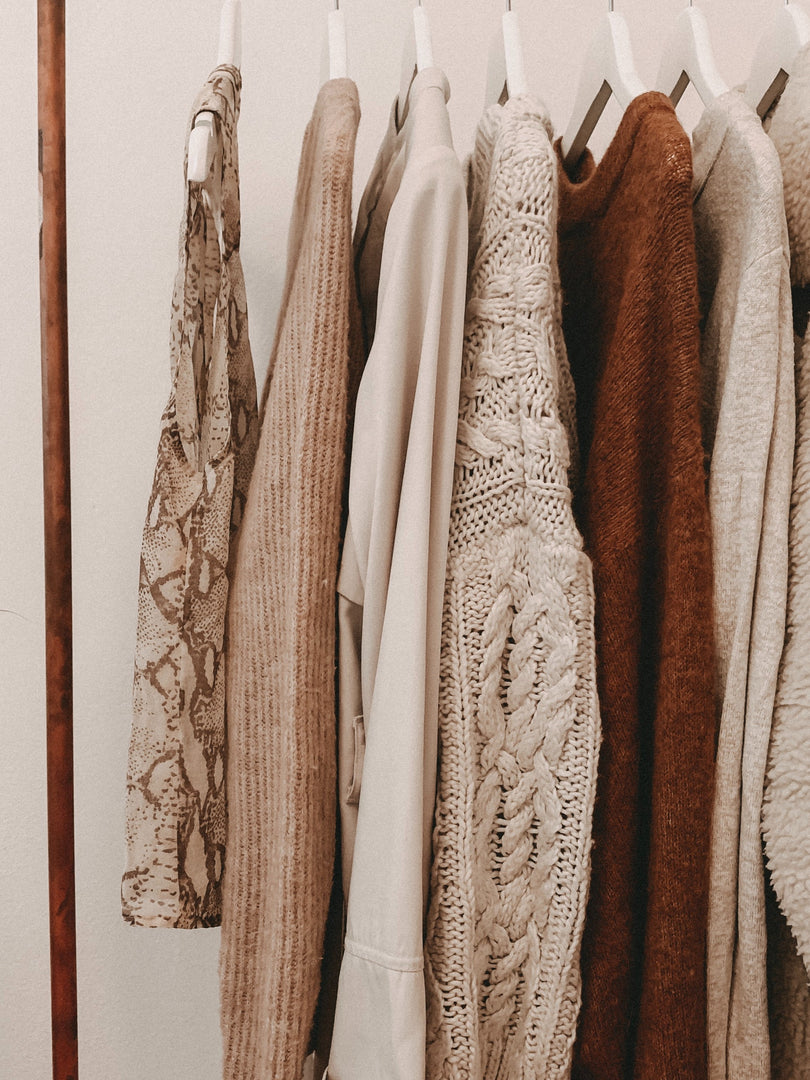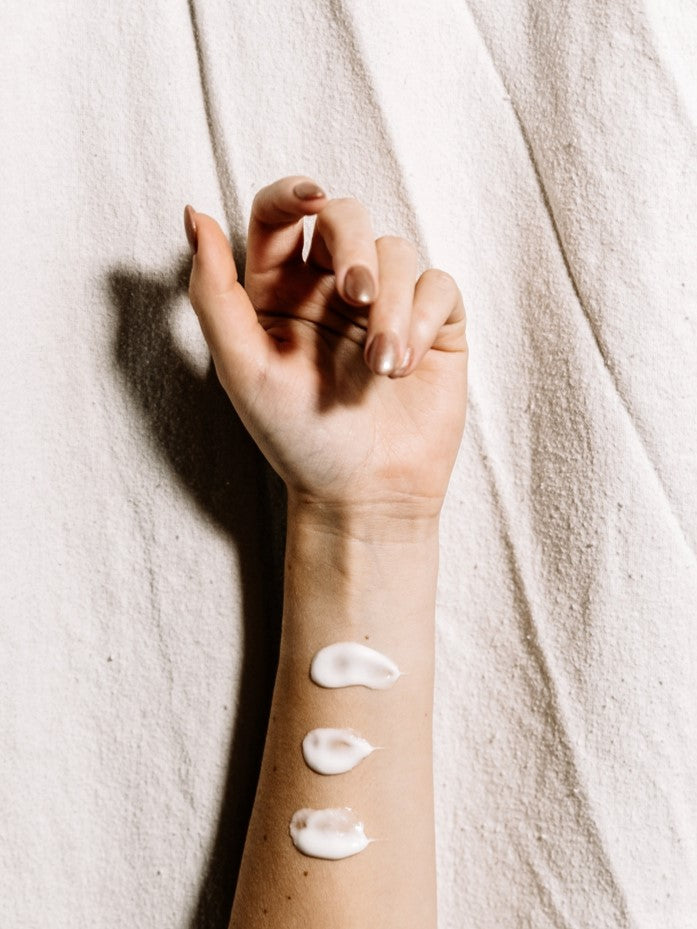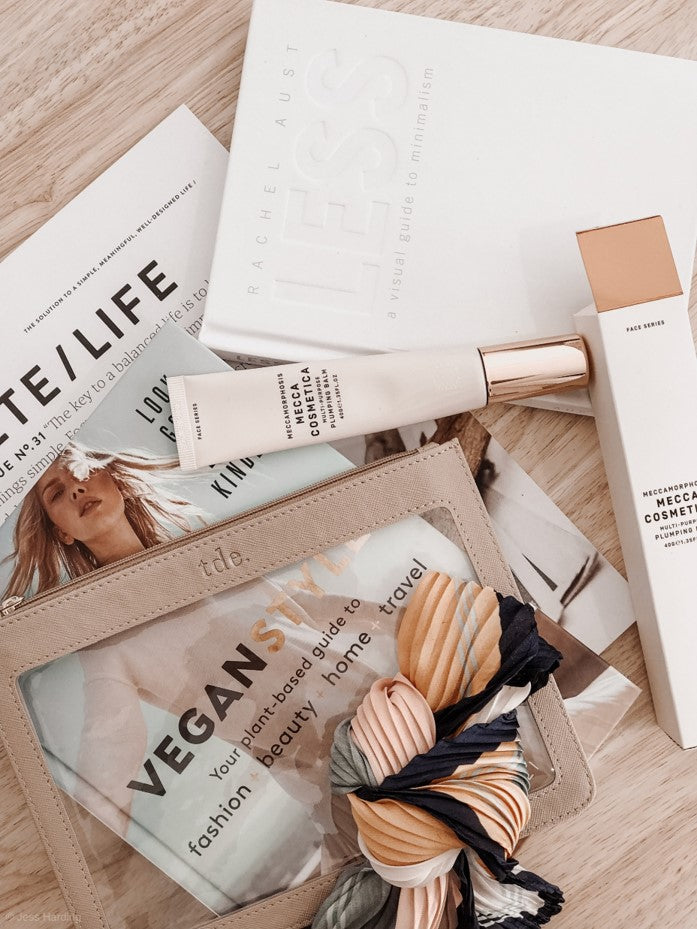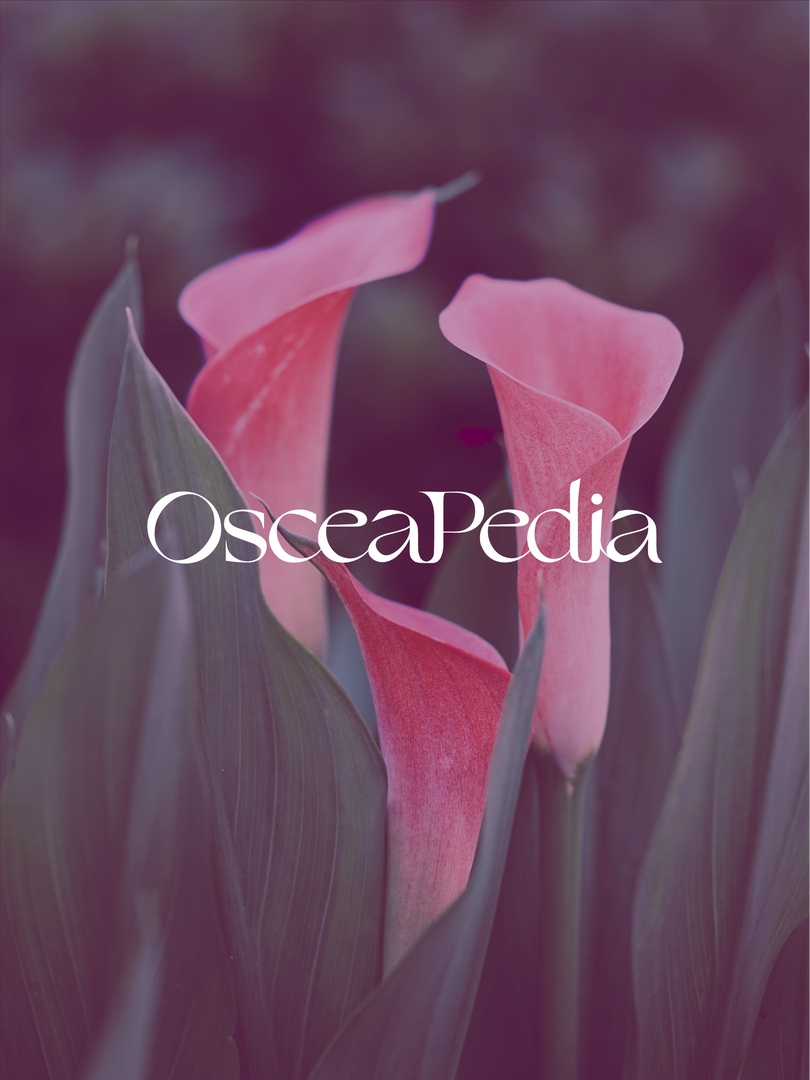Clean beauty is a movement for cosmetics that are safe for people and the planet.
This article will cover:
- An introduction to the clean beauty movement
- The issues with conventional beauty products
- Ingredients to avoid at all costs
- The four pillars of clean beauty- safety, ethics, sustainability, and transparency
- Tips for how to start a clean beauty routine
Introduction to the clean beauty movement
The clean beauty movement is taking the cosmetics industry by storm. Nearly 50 percent of women are already using clean beauty products, according to a recent Harper’s Bazaar poll of more than 1,000 women. 6 in 10 women are already studying the labels of beauty products. Social media mentions of clean beauty have increased 623% since 2016 and the global clean beauty market is projected to exceed $25 billion by 2025. But what exactly clean beauty encompasses, has not been clearly defined. Despite this ambiguity, it is clearly gaining appeal and popularity. The FDA doesn’t regulate or define how cosmetics companies can use words like clean. This means that there is no legal definition or certification for “clean beauty” and it is often used as a marketing term meant to grab the attention of the consumer and lure them in. Any brand can claim their product is natural or clean, without any real legitimacy or repercussions for misuse. It is vital that we, as consumers, do our own research on clean beauty so we are able to see past these marketing terms and greenwashed claims. The simple definition of clean beauty is nontoxic. Nontoxic means that the ingredients have not been shown to cause adverse health effects at the levels found inside the formula and for the intended use. Think of ingredients you can actually pronounce and recognize. Ingredients with no proven health risks and transparent labels are at the core of clean beauty. Aside from being safe for humans, clean beauty is also often defined as safe for the planet. Therefore a more comprehensive definition of clean beauty is a movement for cosmetics that are safe for people and the planet. Clean beauty should consider human and environmental health by using eco-friendly packaging and processing in combination with nontoxic ingredients as a baseline and plant based ingredients for active results. Much like how the idea of “eating clean” rejects the idea of processed food and focuses on natural plant-based alternatives, the same is true for clean beauty. Advances in green chemistry are allowing for more natural ingredients to deliver similar or better reports than traditional synthetics. For example, recent scientists have developed environmentally friendly ways of producing sunscreen from cashew shells! Clean beauty has advanced to a point where it now provides effective, pigmented, and luxurious products. Switching to clean beauty involves no compromise in terms of quality and efficacy.
What is the issue with conventional beauty products?
The clean beauty movement is a fusion of two macrotrends: the global sustainability movement and the heightened awareness and focus on health and wellness. Consumers have begun to take notice of what they are putting into and onto their bodies. Conventional beauty products are full of hazardous chemicals and unsustainable plastic packaging. Of the 82,000 ingredients used in personal care products, almost 14,000 have been found to be industrial chemicals that are carcinogens, pesticides and hormone disruptors. Many of the chemicals in beauty products are endocrine disruptors, for example parabens, which mimic or interfere with the body's hormones. These chemicals can cause adverse health effects like neurological changes, reproductive issues, obesity, and hormone related cancers. The EU has banned parabens due to these proven health concerns- why hasn’t the US? Due to the Food, Drug, and Cosmetics Act of 1938 that only requires food, drugs, and medical devices to have FDA approval, chemicals in the cosmetics industry are completely unregulated. The law nor the FDA require any specific tests to demonstrate the safety of cosmetics products nor do they require companies to disclose safety information with the FDA. The FDA has no authority to recall toxic beauty products unless a manufacturer volunteers. Manufacturers are not even required to register their cosmetics formulas with the FDA. There has been no change to this regulation since 1938 which is wild considering how far science and chemical testing has advanced. Only 11 additives are banned by the FDA for cosmetic products. Meanwhile the EU has banned over 1,300 chemicals for cosmetics including many common ingredients found in US cosmetics like parabens, triclosan, formaldehyde, talc and coal tar. In fact, the UK requires all beauty products and their ingredients to undergo extensive testing and be compliant with several regulations before they can be released to consumers. A major culprit of toxic chemicals is the fragrances in cosmetics. Brands are allowed to use the word fragrance in their ingredients list without any disclosure as to what that is. Fragrance is used as a catchall term that disguises up to 3,000 synthetic or natural chemicals. Phthalates are a common chemical found in this fragrance section since it is used to help the scents last longer. Phthalates are linked to obesity, reproductive harm, infertility, and breast cancer. With no regulation or accountability, US companies will continue to pack the products we use every day with harmful ingredients like known carcinogens, irritants and endocrine disruptors. The clean beauty movement is about making ourselves more aware of what we are putting into our bodies. Since the industry lacks regulation, it is up to us to become familiar with common toxins, their harmful health concerns and how to avoid these chemicals.
Conventional beauty products are harmful not only for human health but also for the environment's health. These toxic chemicals and ingredients go down the drain and into waterways where they pollute the environment and harm aquatic organisms. For example, oxybenzone, a common chemical found in sunscreen due to its UV blocking quality, is linked to coral bleaching. Common beauty ingredients Triclosan and Siloxanes are known to bioaccumulate in aquatic food chains and are toxic to aquatic bacteria, algae, and dolphins. Another concern is that many raw materials are used in cosmetics grown with harmful pesticides and use non-renewable resources like petroleum and petrochemicals. Conventional beauty products are often made from a petroleum jelly base and are packaged in plastic. A major concern is that these materials are created from the extremely polluting oil industry. Also, plastic packaging breaks down into microplastics that get consumed by marine life. This plastic packaging, which is made from petrochemicals from oil or fracked glass, cannot be recycled.
Aside from chemicals and raw materials being unregulated, the terms like clean and sustainable are also unregulated by the FDA. Companies have control over what they consider to be natural or safe. This lack of legal definitions has led to pervasive greenwashing, which is advertising and marketing that appeals to the conscious consumer by conveying fake messages that a product is good for you or the environment, when in reality, it is not. For example, in 2016, the Federal Trade Commission filed complaints against four companies that marketed their personal care products as “all natural” or “100 percent natural” when the products contained a number of synthetic ingredients. In 2019, in the U.S., the Natural Cosmetics Act was introduced to The House of Representatives. The bill aimed to both define and legislate the use of the terms “natural” and “naturally-derived.” It would mean that products with less than 70 percent natural ingredients couldn’t be labelled as natural, and it would allow the FDA to legally intervene on any misuse. The bill has not progressed since it was introduced, and if it were to pass, it would still leave brands to use many other terms without regulation, like “green” and “clean.”
Since the industry lacks regulation, it is up to us to become familiar with harmful toxins so that we can quickly examine labels and see past the greenwashed marketing schemes. Clean beauty is a spectrum, but some ingredients should be avoided altogether.
Start With These Toxic Ingredients to Avoid at All Costs:
- Parabens like Propylparaben and Iosbutylparaben
- “Fragrance” - used as a loophole to hide hundreds of toxic ingredients
- Formaldehyde
- Phthalates like Dibutyl phthalate
- Chemical UV filters Octanoate and Oxybenzone
- Diethanolamine (DEA)
- Triclosan
- Sodium laureth sulfate (SLS)
- Oxybenzone
- Polyethylene (PEGs) like PEG-10 laurate
- Butylated hydroxy anisole (BHA)
- Aluminum
- Artificial colors and dyes
- BHA
- BHT
- Petroleum
- Siloxanes
- Talc
- Hydroquinone
- Ethanolamine's
Main Pillars of Clean Beauty
Clean beauty is safe for people and the planet.
Clean beauty is not simply a passing fad or trend. It is a growing movement advocating for cosmetic ingredient regulation. The four main pillars of the clean beauty movement are safety, ethics, sustainability, and transparency. We will now go deeper into each of these pillars so that we can fully understand what clean beauty is.
1. Health/Safety
Ingredients should be nontoxic and involve little hazard and low risk. Chemicals banned in the EU should never be used in US clean beauty products.
2. Ethics
Clean beauty should ideally be ethical. Clean cosmetic products should not be tested on animals. They should be cruelty free and vegan. Ethical sourcing is also important. The people who manufacture and source the raw materials should be paid fairly and treated respectfully. Companies and consumers should know where the materials are coming from and should be choosing the best sustainable source possible for the ingredient. Production and factory conditions should be safe and ethical.
3. Sustainability
Raw materials used in clean beauty products should be grown sustainability and made without toxic or unsustainable pesticides. The ingredients should not be based on non-renewable resources. Raw materials should be abundant and biodegradable. The end of the product's life should be taken into consideration. The product should be safe to wash down the drain and the packaging should be biodegradable or recyclable.
4. Transparency
Transparency is key to clean beauty. Every ingredient used should be accurately displayed on the ingredients list. No toxic or incident ingredients should be found when tested. Companies should not make claims that cannot be backed or supported. Fragrance secrets should be disclosed or eliminated. Transparency should include the entire supply chain.
Lost on where to start? Here are some tips on how to make the shift to clean beauty
- You don’t need to ditch every product you own and start fresh!
- Look at the product labels you already own and research the ingredients
- Swap out the products you use most often
- If a product is intended to stay on your skin all day or is covering a large surface area like moisturizers, lotions, and sunscreens, try to swap them out
- When buying new products, always read labels carefully and look for ingredients you can actually pronounce and recognize.
- Learn and familiarize yourself with important ingredients to avoid.
- Consult resources that specify toxic ingredients like the Think Dirty app, Made Safe Hazard List, and the Environmental Working Group Skin Deep database
- Avoid chemicals banned in the EU.
- Avoid products that have “fragrance” listed under ingredients. Fragrance-free is the way to go.
- Select products with eco-friendly and biodegradable packaging
- Look at the products expiration date when shopping: 6-18 months after opening is ideal, natural ingredients that have been sitting out for years are no longer nutritional or effective
- Certifications, trusted brands and apps are here to help.
- Research and look for clean beauty certifications that match your values: B Corp, USDA Organic, PETA’s Beauty Without Bunnies, Made Safe, EWG Verified etc.
- Find clean beauty brands that you trust
- Download a clean beauty app like CosmEthics or INCI Beauty, these apps allow you to quickly scan products and analyze their safety, sustainability, and ethics
- Overtime, build a complete clean routine!
Conclusion
Sustainability and product safety matter! The clean beauty movement is educating and empowering consumers while also setting a standard for safe beauty products. It is important that we become aware of the plethora of harmful chemicals lurking in our cosmetics and learn how to avoid them. Different brands have varying definitions of what is safe and have drawn different lines as to what they will and won’t use. Since the cosmetics industry has such minimal standards, it is hard to imagine clean beauty being FDA regulated anytime soon. This change has to be driven by consumers voting with their dollars. By choosing safer products, we can protect our health and force the industry to adapt.
Sources:
https://www.healthstatus.com/health_blog/infographic/what-exactly-is-clean-beauty/
https://thegoodfaceproject.com/articles/what-is-clean-beauty
https://www.livekindly.co/what-is-clean-beauty/
https://www.instyle.com/beauty/best-beauty-products-september-2021
https://credobeauty.com/pages/the-credo-clean-standard-1 https://www.harpersbazaar.com/beauty/skin-care/a28352553/clean-beauty/
https://pebblemag.com/magazine/living/clean-beauty-movement










